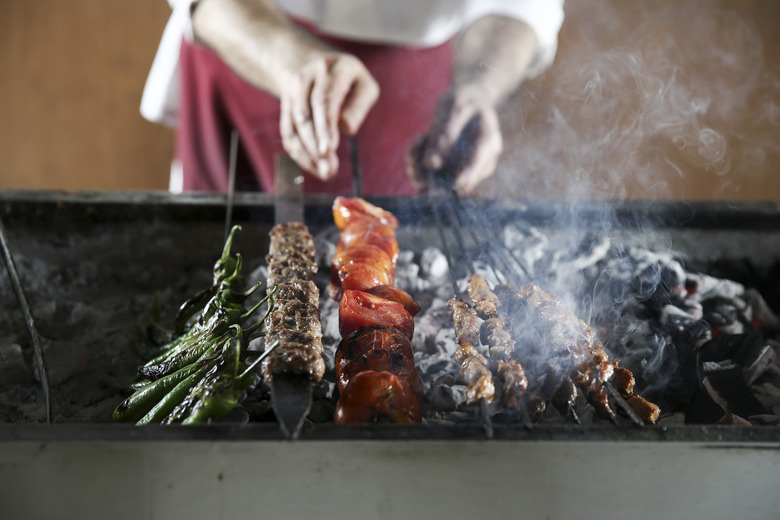What Is Chemical Energy?
Do you realize your body is full of chemical energy? Chemical energy is present in your body, and it is constantly used to perform daily tasks that you might take for granted. Chemical energy is released when chemical bonds form in chemical reactions – that may be an exothermic reaction or an endothermic reaction.
What Is Chemical Energy?
What Is Chemical Energy?
In the world of science, chemical energy results from a chemical reaction as a form of potential energy. Chemical energy is stored in the bonds of chemical compounds – the molecules and atoms that make up the world around us. When chemical energy is released from a material, the substance is transformed into an entirely new substance. Chemical changes in the amount of energy may be exothermic when the energy is released or endothermic in which the reaction requires energy to take place.
As with all forms of energy transfer, chemical reactions preserve the total energy in our world (following the first law of thermodynamics, also called the law of conservation of energy). According to this property, energy can only change form (as new bonds form or old bonds break), but the total energy of a system is always constant.
What Does Chemical Energy Do in the Human Body?
What Does Chemical Energy Do in the Human Body?
Your body uses chemical energy in everyday life. Food contains calories and when you digest food, the energy is released. The molecules in food are broken down into smaller pieces. As the bonds between the atoms break or loosen, oxidation occurs. The chemical reaction involved in digestion supplies you with warmth, helps to maintain and repair your body and gives you the energy you need to move around.
What Does Chemical Energy Do in Plants?
What Does Chemical Energy Do in Plants?
Plants use chemical energy too. They perform photosynthesis when they use sunlight to make food for themselves. During photosynthesis, solar energy is converted to chemical energy in this process. The chemical energy is stored as hydrocarbons like glucose (or sugar). Photosynthesis occurs in plant's leaves and the process requires sunlight, water and carbon dioxide to occur.
This stored chemical potential energy is a vital energy source for plants and animals, as this stored energy is transferred up the food chain through consumption. Life on Earth is inextricably linked to the cycles of chemical energy, solar energy, and heat energy.
TL;DR (Too Long; Didn't Read)
Plants can also be used as biofuels – a source of combustion energy.
What Are the Types of Chemical Reactions?
What Are the Types of Chemical Reactions?
Six types of chemical reactions exist: synthesis, combustion, single displacement, double displacement, decomposition and acid-base. Synthesis is when two simple substances combine and make a complex substance. In combustion, heat is released when the oxygen combines with other substances to change into water and carbon dioxide.
Single displacement occurs when some atoms from one substance transfer to another substance in the chemical reaction. Double displacement occurs when the atoms in one substance are exchanged with the atoms in another substance. Decomposition occurs when a complex substance breaks down into simpler substances as a result of a chemical reaction. Acid-base is similar to a double replacement chemical reaction and is when an acid and a base are involved.
What Are Some Examples of Chemical Energy?
What Are Some Examples of Chemical Energy?
When a fuel source, such as natural gas or biomass burns in a combustion reaction, it releases chemical energy as a form of heat and light energy. After you burn wood, it changes into ashes, as a new substance. This releases energy in the form of thermal energy and radiant energy, as the bond energy in the original material is converted to another type of energy.
Cooking food is an example of chemical energy, as you are using gas or electricity to heat or cook your meals. In this case the reactants are natural gas and energy, and the products are compounds like benzene and methane. Heat is only a byproduct of this combustion reaction.
When a power plant burns fossil fuels, chemical energy is used to produce mechanical energy (or kinetic energy), which then creates the electrical energy that you use on a daily basis. This electrical power is then expressed as the movement of electrons through circuits.
Cite This Article
MLA
Lougee, Mary. "What Is Chemical Energy?" sciencing.com, https://www.sciencing.com/what-is-chemical-energy-13712146/. 4 August 2023.
APA
Lougee, Mary. (2023, August 4). What Is Chemical Energy?. sciencing.com. Retrieved from https://www.sciencing.com/what-is-chemical-energy-13712146/
Chicago
Lougee, Mary. What Is Chemical Energy? last modified August 4, 2023. https://www.sciencing.com/what-is-chemical-energy-13712146/
